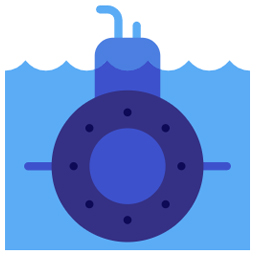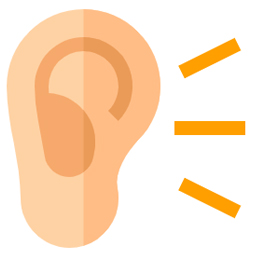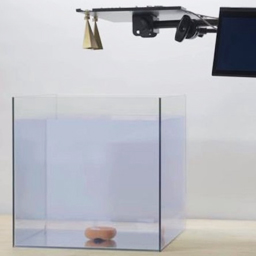

The scientists have established a system for a submarine to plane communication.
Air-water boundary breaking is a longstanding problem in transmitting the data between aircraft devices and underwater. In order to overcome this problem researchers have designed a new system using wireless communication.
The scientists have established a system for a submarine to plane communication without arriving at the surface of the water.
Advancement of technologies helps to meet the underwater challenges and paves the way for air-water communication.
Due to the difference in wireless signals, the sub-aquatic sensors cannot transmit data to those devices on the land.
The acoustic waves are often reflected back to the surface that was sent by underwater devices without cracking through.
Also, the radio signals proceeding through air perish fast in water. These obstacles can cause issues in many applications like an underwater interaction with air and ocean exploration.
Vibration Decoding For Transmitting Underwater Signals

To solve these issues, researchers have used a system called translational acoustic-RF communication (TARF)
The current technology has facing many difficulties in the wireless communication sector such as collecting the sonar signals, processing the data as well as transmitting radio waves to aircraft receivers. Know more about Wireless communication sector.
To solve these issues, researchers have used a system called translational acoustic-RF communication (TARF).
However, this system is at its early stage, they believe that this system could result in better water-air communication.
TARF consists of an acoustic transmitter which can transmit the sonar waves using a normal acoustic speaker.
The signal transmitted from the transmitter moves as pressure waves in different frequencies that are equal to various data bits.
The transmitter conveys a wave at 100 Hertz when it wants to send a 0 and it fetches a 200-Hertz wave to 1. While the wave reaching the surface, it can cause few ripples in few micrometer heights on the water with matching frequencies.
Simultaneously, the system carries a wide range of frequencies to obtain high data rates.
This is built on a modulation scheme called orthogonal frequency division multiplexing in wireless communication which enables the scientist to fetch hundreds of bits.
The very high-frequency radar that is located above the transmitter in the air can process these signals between 30 and 300 GHz.
Another application of this system is aiding the search for missing planes that disappear underwater. The black box device in a plane is implemented with an acoustic transmitter that can transmit a signal once so that you can able to find it.
Listening To ‘The Whisper’

The researchers created a signal-processing algorithm in order to solve this problem.
Helping the radar to identify the water surface is the main challenge in this system. So the researchers engaged a new technology to detect the reflection based on power and distance in the environment. The radar admits the distance to the surface with the strongest reflection of water in the system’s environment.
Capturing the micrometer waves surrounded by natural waves was the next biggest challenge.
The capillary waves are 100,000 times larger and rougher waves are million times larger than the vibrations. It is similar to hear someone’s screaming as well as trying to hear the whispering simultaneously.
The researchers created a signal-processing algorithm in order to solve this problem.
The frequency differential of sonar vibrations makes the algorithm zeroes on the fast-moving waves by ignoring the slower ones.
Testing The Water

Testing in water tank.
The researchers used a TARF system in a water tank for 500 test runs and two kinds of swimming pools. The radar was placed between 20 to 40-centimeter range above the surface and the sonar transmitter was kept with a range of 5 to a 70-centimeter range below the surface of the water tank.
Likewise, it is done at different swimming pools, where they had swimmers to create waves. These waves rose about 16 centimeters in the pool.
At this research, the TARF system decoded different data at hundreds of bits per second which is the same as standard data rates for underwater communication.
This TARF system enables the aircraft devices flying across a water surface to pick up and decode the sonar wave’s standard.
In today’s world, communication advancements are no more surprise to everyone.







